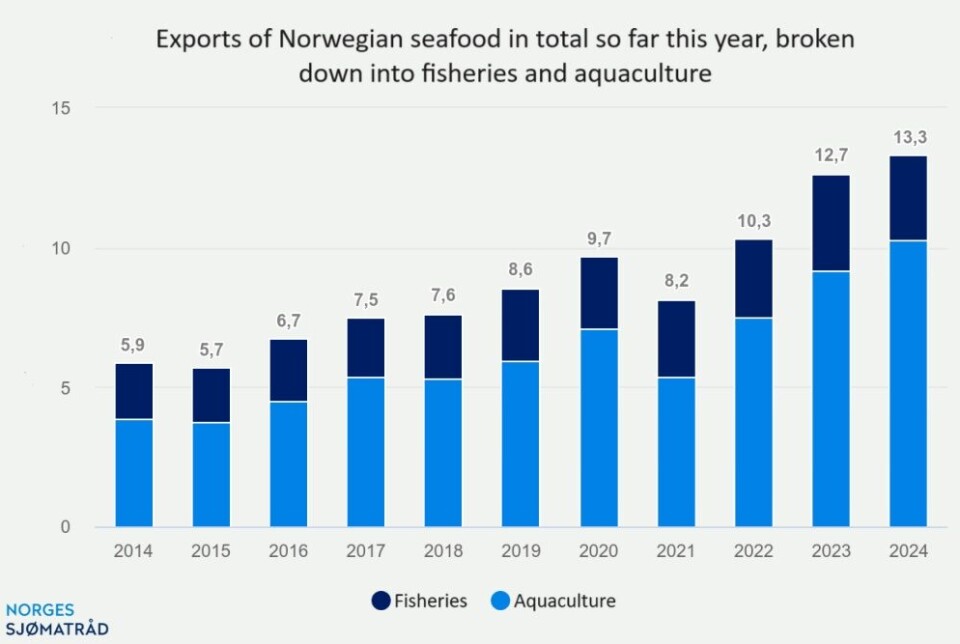
Weaker currency and high salmon prices lift Norway’s seafood export figures
The value of salmon exported from Norway in January increased by NOK 975 million (11%) to NOK 9.8 billion (£731m/€856.5m) compared to the same month last year, despite the volume falling by 2% year on year to 86,985 tonnes.
The Norwegian Seafood Council attributed the increase to higher salmon prices and a weaker krone, which has fallen by 6% against the euro compared to January 2023.
Poland, France and the United States were the biggest markets for Norwegian salmon in January. Poland, which buys fish for secondary processing as well as domestic consumption, had the most significant increase in value in January, with an increase in export value of NOK 263m (32%), compared to last year.
The export volume to Poland ended at 11,400 tonnes, 26% higher than the same month last year.
“The development in January follows the pattern from the last three years; a decrease in volume gives a more robust growth in price compared to the same period the previous year, and the result is an increase in value,” says Paul Aandahl, seafood analyst with the Norwegian Seafood Council.
The average export price for fresh whole salmon in January was NOK 107.09 per kg. That is 15% higher than in the same month last year.
Trout volume up 49%
Norway exported 4,584 tonnes of trout worth NOK 439m in January, an increase of NOK 132m (43%) in value and 49% in volume compared to January 2023.
The US, Thailand and Ukraine were the biggest markets for trout.
Ukraine had the most significant increase in value, with an increase in export value of NOK 42m, or 264%, compared to the same month last year.
The export volume to Ukraine was 682 tonnes, which is 177% higher than the same month last year.
“Historically speaking, both trout production and exports have had significant fluctuations,” said Aandahl. “There was a decrease in 2023, but it is now back at the 2022 level measured in volume. However, there has been a sharp turn in the product mix for trout. Fresh whole trout has increased its dominance compared to the other product types.”
Measured in terms of value, fresh whole trout accounted for 71% of exports in January, compared to 57% in the same month last year.
26% of cod was farmed
The export volume of fresh farmed cod, which is still a fledging industry, increased by 62% to 1,051 tonnes and a value of NOK 59m.
That increase, along with a decline in exports of wild-caught fresh cod, meant that at least 26% of the export value of fresh cod in January was farmed cod.
“While the transit country Denmark is the largest destination for wild-caught cod, with over 80% of the export volume, Spain is the largest destination for farmed cod. Forty per cent of the volume ends up in this market,” said another of the Council’s analysts, Eivind Hestvik Brækkan.
A record for January
Overall, the value of Norway’s farmed and wild-caught seafood exports was NOK 13.3 billion in January, an increase of NOK 640m (5%) compared to January 2023.
“2024 seafood exports have got off to a good start. This is primarily due to increased salmon prices. Together with a weakened krone, this has led to the total export value setting a record high for January,” said Seafood Council chief executive Christian Chramer.
The value of seafood exports has continuously grown for the last 35 months, partly due to Norway’s currency.
“We also saw a significant currency effect in January. Compared to the same month last year, the Norwegian krone has weakened by 6% against the euro, which raises export prices in the Norwegian kroner,” explained Chramer.





















































